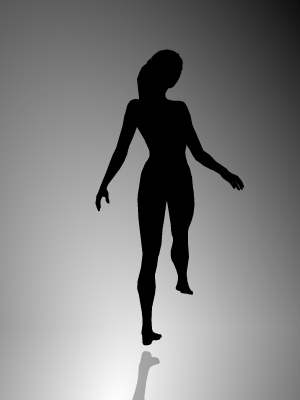Module 1
1. Module 1
1.26. Lesson 5
Module 1—The Nervous System
Lesson 5—Photoreception—the Eye
 Get Focused
Get Focused
When you are in a room full of people, you are constantly gathering information about those around you. You respond to the sights, smells, sounds, and feel of the room. Your eyes are one of the best sensory tools you can utilize to gather information from your external environment. In fact, 80% to 90% of all sensory information is received by your eyes. Consider this fact the next time you find yourself trying to make sense of a new environment or situation.
Your ability to interpret the visual information you receive is a complex process that is dependent on the physiology of the eye and a complex series of reactions that are not entirely understood. In Lesson 2 you studied the parts of the brain, so you should now be capable of making the connection between how a nerve impulse is transmitted to the occipital lobe of the cerebrum and how the image is then interpreted by the same part of the brain. The work you did in Lesson 4 will help you understand how perception results from the cerebral cortex interpreting the meaning of the sensory information received.
How much do you remember about what you saw after you leave a room full of people? If you were to compare your perceptions with another person who was in the same room, do you think your visual memories would be the same? For an interesting example of how what you see is perceived, observe the rotating dancer.

According to your perception, in which direction is she rotating? Were you able to change the direction of her rotation? Your perception is based on how your brain interprets visual information. In this lesson you will learn about eye function and the communication of visual information. You will also see how these processes influence your perceptions of what you see.
In this lesson you will explore the following questions:
- What are the major parts of the eye?
- How do these parts function?
- How do these parts work together to communicate with the nervous system in order to facilitate the integrated act of seeing?
 Module 1: Lesson 5 Assignment
Module 1: Lesson 5 Assignment
Your teacher-marked Module 1: Lesson 5 Assignment requires that you complete and submit the following:
- an eye lab
- a table of vision defects and disorders
Download a copy of the Module 1: Lesson 5 Assignment to your computer now. You will receive further instructions about how to complete this assignment later in the lesson.
You must decide what to do with the questions that are not marked by your teacher.
Remember that these questions provide you with the practice and feedback that you need to successfully complete this course. You should respond to all of the questions and place those answers in your course folder.
There are also many valuable practice questions in your textbook that you can use to evaluate your understanding. You can ask your teacher for direction on choosing extra questions or for assistance with your answers.
Any work completed in summary notes, results of Self-Checks, concept maps, flow charts, or diagrams that you develop should be stored in your course folder as reference for future study. You will also save a discussion board activity about the risks and benefits of laser surgery.
The Module Assessment for Module 1 involves a study of Alzheimer’s disease. As you work through this lesson examining the structures and functions of the eye, consider whether there are any links to the symptoms of Alzheimer’s disease. Store your research in your course folder for use in the final preparation of your response to the Module Assessment.
This lesson may take longer than 80 minutes to complete. You should devote the time necessary to complete your understanding of the structures and functions of the eye and the features of vision because this is the most important of the senses.
Required Materials and Equipment
For this lesson you will have the choice of conducting either a virtual dissection of an eye or an actual dissection of an eye. To conduct the dissection lab of a real eye, you will need
- a preserved cow eye obtained from a biological supply house or a fresh cow eye obtained from a butcher
- rubber gloves
- safety goggles
- a clean dissecting tray or a clean foam tray
- sharp scissors with pointed tips
- a sharp knife or a scalpel
- a bleach solution to be used for cleanup